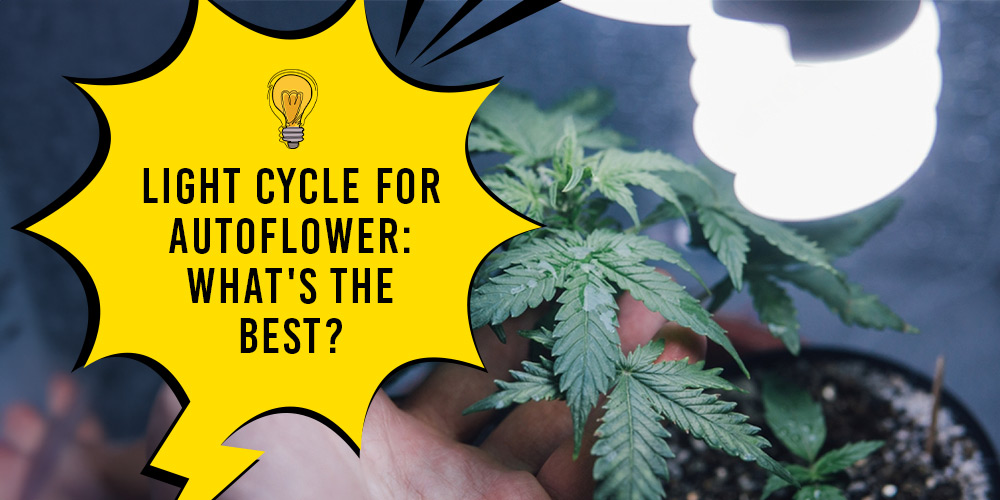


Table of Contents
ToggleAutoflowering cannabis plants are known for their unique ability to flower automatically, regardless of the light conditions. This characteristic makes them a popular choice among growers. However, providing the right light cycle is essential to maximize their potential.
To harness the full potential of autoflowering cannabis, it’s crucial to understand their light schedule. These plants have a growth cycle divided into two main stages: vegetative and flowering. During the vegetative stage, they require approximately 18-20 hours of light per day, simulating long summer days. This extended light exposure allows them to grow vigorously and develop robust foliage.
As autoflowers transition into the flowering stage, the light schedule changes. They benefit from a shorter light cycle of 12 hours of light and 12 hours of uninterrupted darkness. This shift in lighting triggers the production of buds and initiates the flowering process.
The light cycle plays a pivotal role in the growth and development of autoflowering cannabis. It regulates their internal biological clock, ensuring they transition smoothly from the vegetative to the flowering stage. By adhering to the appropriate light cycle, you’ll provide the optimal conditions for your plants to thrive.
The ideal light cycle for autoflowers is 18/6 (18 hours of light, 6 hours of darkness) during the vegetative stage and 12/12 during the flowering stage. This mimics their natural habitat and promotes robust growth.
In the vegetative phase, the extended light period enables the plants to perform photosynthesis efficiently, resulting in lush foliage and healthy growth. During this stage, autoflowers are building their root systems and preparing for the flowering phase.
When transitioning to the flowering stage, the 12/12 light cycle simulates the shorter days of late summer and early autumn. This triggers the production of flowers and buds, leading to a bountiful harvest. It’s essential to maintain this cycle consistently to prevent stress and ensure optimal results.
While the 18/6 and 12/12 light cycles are standard and widely recommended, some growers experiment with different schedules. However, it’s crucial to approach any changes with caution. Abruptly altering the light cycle can stress the plants, leading to stunted growth or hermaphroditism (the development of both male and female reproductive parts). If you plan to experiment with alternative light schedules, it’s advisable to make gradual transitions over several days to minimize stress and monitor your plants closely for any adverse effects.
Red light, particularly in the flowering stage, plays a critical role in encouraging bud development. You should switch to red light when your autoflowering cannabis plants start flowering, which typically occurs after 2-4 weeks of growth.
During the flowering stage, your plants shift their focus from vegetative growth to the production of flowers and buds. Red light, in the spectrum of around 660-730 nanometers, is essential for this phase as it promotes bud formation and flowering. Many growers use LED grow lights with adjustable spectrums to provide the appropriate red light during this stage, enhancing the quality and quantity of the harvest.
When it comes to cultivating autoflowering cannabis plants successfully, experienced growers have valuable insights and tips to share. These recommendations can make a significant difference in the health, yield, and overall quality of your harvest. Here are some expert tips and insights to consider:
Q: How often should I water my autoflowering cannabis plants?
A: Watering frequency depends on various factors, including the size of your pots and environmental conditions. Always monitor the soil’s moisture level and adjust accordingly. Overwatering can lead to root rot, while underwatering can stress the plants.
Q: Can I use LED lights for autoflowering cannabis?
A: Yes, LED lights are an excellent choice for autoflowering cannabis. They produce less heat and can be customized to provide the specific light spectrum needed for different growth stages. High-quality LED grow lights can significantly enhance plant growth and yield.
Q: Do autoflowering plants require nutrients?
A: Yes, autoflowering cannabis plants require nutrients to thrive. However, it’s crucial to use a balanced and suitable fertilizer designed for each growth stage. Overfeeding can cause nutrient burn and negatively affect plant health, so follow recommended feeding guidelines.
Q: Should I prune my autoflowering cannabis?
A: Light pruning can help improve air circulation and light penetration, leading to healthier and more productive plants. However, avoid heavy pruning, as it can stress autoflowering cannabis plants and reduce yields.
Q: Can I grow autoflowers outdoors?
A: Yes, autoflowering cannabis plants can be grown both indoors and outdoors. Outdoor cultivation is possible in regions with suitable climates and longer growing seasons. Ensure they receive ample sunlight and protection from pests and harsh weather conditions.
Q: What is the average yield for autoflowering cannabis?
A: The average yield of autoflowering cannabis plants varies based on several factors, including strain, growing conditions, and experience level. With proper care and optimal light cycles, you can typically expect a yield of around 100-200 grams per plant, but results may vary.


Best Selling
Feminized Seeds
Regular Seeds
Customer Help
WE SELL MARIJUANA SEEDS IN THE USA

Are You 18 Or Over?
YesOr
No By clicking yes, you certify that you are over 18. By using this website, you agree to our legal disclaimer.